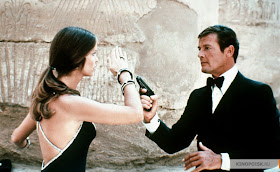Below is an article that features the history and a recipe for a dish called "Steak Diane":
STEAK DIANE
Tracing the history of the culinary dish, Steak Diane, proved to be a complicated affair. From some of the articles I have read, the dish's history could be traced back to the late 19th century and early 20th century, when European chefs rediscovered the recipe for an ancient dish that required sauce served over venison. Its sharp sauce was intended to complement the sweet flavor of deer meet. It was named after the Roman goddess of the hunt and the moon, Diana.
But the actual Steak Diane evolved from Steak au Poivre, which was coated with cracked peppercorn before cooked and smothered with sauce. But Steak au Poivre did not include flambéing with brandy in its recipe. Steak Diane did. Sometime during the 1950s, Steak Diane made its first appearance either at the The Drake Hotel, the Sherry-Netherland Hotel or the Colony Restaurant in New York City. Beniamino "Nino" Schiavon, an Italian-born chef who worked at the Drake Hotel. I do know that Steak Diane became a very popular dish for those who hobnobbed within New York's high society during the 1950s and 1960s.
The following is a recipe for the dish from celebrity chef, Emeril Lagassee:
Steak Diane
Ingredients
4 (3-ounce) filet mignon medallions
1/2 teaspoon salt
1/4 teaspoon freshly ground black pepper
1 tablespoon unsalted butter
4 teaspoons minced shallots
1 teaspoon minced garlic
1 cup sliced white mushroom caps
1/4 cup Cognac or brandy
2 teaspoons Dijon mustard
1/4 cup heavy cream
1/4 cup reduced veal stock, recipe follows
2 teaspoons Worcestershire sauce
2 drops hot red pepper sauce
1 tablespoon finely chopped green onions
1 teaspoon minced parsley leaves
Preparations
Season the beef medallions on both sides with the salt and pepper. Melt the butter in a large skillet over medium-high heat. Add the meat and cook for 45 seconds on the first side. Turn and cook for 30 seconds on the second side. Add the shallots and garlic to the side of the pan and cook, stirring, for 20 seconds. Add the mushrooms and cook, stirring, until soft, 2 minutes. Place the meat on a plate and cover to keep warm.
Tilt the pan towards you and add the brandy. Tip the pan away from yourself and ignite the brandy with a match. (Alternatively, remove the pan from the heat to ignite, and then return to the heat.) When the flame has burned out, add the mustard and cream, mix thoroughly and cook, stirring, for 1 minute. Add the veal stock and simmer for 1 minute. Add the Worcestershire and hot sauce and stir to combine. Return the meat and any accumulated juices to the pan and turn the meat to coat with the sauce.
Remove from the heat and stir in the green onions and parsley. Divide the medallions and sauce between 2 large plates and serve immediately.
Here is the recipe for the Reduced Veal Stock:
Preparation
4 pounds veal bones with some meat attached, sawed into 2-inch pieces (have the butcher do this)
2 tablespoons olive oil
2 cups coarsely chopped yellow onions
1 cup coarsely chopped carrots
1 cup coarsely chopped celery
5 garlic cloves, peeled and smashed
1/4 cup tomato paste
6 quarts water
4 bay leaves
1 teaspoon dried thyme
1 teaspoon whole black peppercorns
1 teaspoon salt
2 cups dry red wine
Preparation
Preheat the oven to 375 degrees F.
Place the bones in a large roasting pan and toss with the oil. Roast, turning occasionally, until golden brown, about 1 hour. Remove from the oven and spread the onions, carrots, celery, and garlic over the bones. Smear the tomato paste over the vegetables and return the pan to the oven. Roast for another 45 minutes. Remove from the oven and pour off the fat from the pan.
Transfer the bones and vegetables to a large stockpot. Do not discard the juices in the roasting pan. Add the water, bay leaves, thyme, salt, and peppercorns to the stockpot and bring to a boil. Meanwhile, place the roasting pan over two burners on medium-high heat. Add the wine and stir with a heavy wooden spoon to deglaze and dislodge any browned bits clinging to the bottom of the pan. Add the contents to the stockpot. When the liquid returns to a boil, reduce the heat to low and simmer, uncovered, for 8 hours, skimming occasionally to remove any foam that rises to the surface.
Ladle through a fine-mesh strainer into a large clean pot. Bring to a boil, reduce to a gentle boil, and cook, uncovered, until reduced to 6 cups in volume, about 1 hour. Let cool, then cover and refrigerate overnight. Remove any congealed fat from the surface of the stock. The stock can be stored, covered, in the refrigerator for up to 3 days, or frozen in airtight containers for up to 2 months.















































